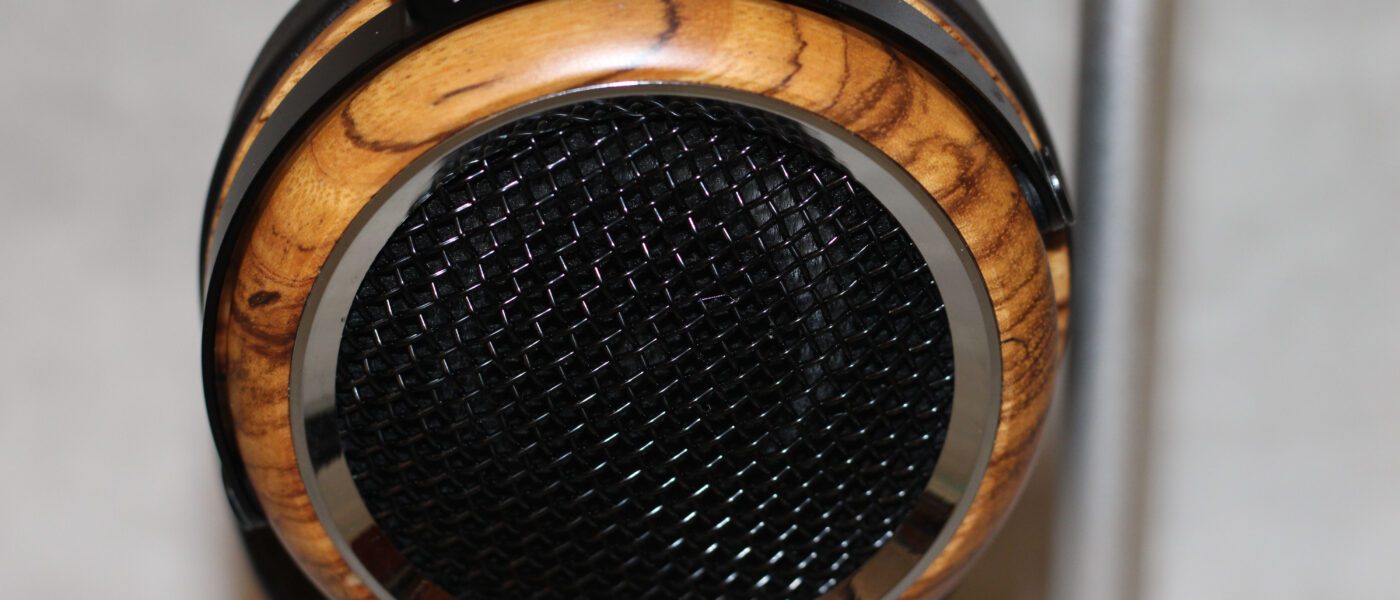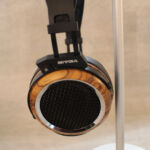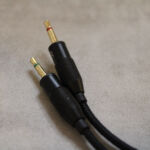Sivga Phoenix
disclaimer: The Sivga Phoenix was sent to me directly by Sivga for review. Sivga and its sibling Sendy Audio are making in-roads into the US market and are carried by Audio46 and Musicteck in the US as well as being available for order directly from the Sivga website worldwide. I have no financial interest in Sivga, Sendy, or any of their distributors, nor have I received any compensation for this review. The Phoenix has been on-loan to me for purpose of this review and was shipped to another reviewer once this review was complete as well. I appreciate my time with the Phoenix and look forward to additional models from Sivga. Be sure to follow them on Facebook if you haven’t already so you get the next generation of product announcements.
Unboxing / Packaging:
The Phoenix packaging has hints of both Hifiman and Beyerdynamic packages with a lift top box that is reminiscent of the He6 box and a hard-case sitting inside that reminds me of the T5p. The front of the packaging has a line drawing of the Phoenix while the reverse has the specs. One thing to note, the wood grain on the sides of the box unfortunately do not do justice to the zebrawood cups and may be persuading customers to look away which is unfortunate. I’d leave the wood grain off the package and let the cups speak for themselves as they are beautiful and its a shame the packaging doesn’t capture that. Inside the box, you are greeted with a hard case and a pair of protein leather pads. Opening the case reveals the headphone itself, the cable in a small linen bag, and a set of hybrid pads with a cloth face. The cable is cloth wrapped and uses 2.5mm connectors at the northern ends and a 3.5mm single ended connnector and 6.3mm adapter at the southern end.
Build/Fit:
Construction on the Phoenix is first rate with gorgeous wood cups and well fit and finished metal parts making up the vast majority of the build. The only plastics are inside the cups in areas where they are not subject to repeated stress and as such I’d expect the Phoenix to last well. The Zebrawood cups are highly figured and well polished to really highlight the grain and detail in the wood. One thing to note is that the cups are on the small side so those with large ears may find these a little crowded as the combination of shallow pads and narrow cups could become an issue. If you have larger than average ears, I suggest trying these before purchase. The Hinges offers movement on both the vertical and horizontal axis which some have criticized in recent Hifiman models so that was nice to see. Padding on the headband is good and comfort was quite good if using the cloth pads. As mentioned earlier the Phoenix does ship with a hybrid (cloth) pad and a protein leather pad in the box. After a quick trial of the protein leather, I switched back to cloth and all of my testing and listening notes were conducted using the cloth pads as the pleather was just too hot and uncomfortable for extended use. I found that I could wear the Phoenix with my glasses without experiencing discomfort. Clamping force is minimal which probably helps contribute to the easy fit and comfort, but will limit utility of the Phoenix for active situations.
Internals:
The Phoenix uses a 50mm dynamic driver using a polycarbonate film diaphragm and in-house designed magnetic structure and basket to stiffen the diaphragm and reduce distortions of the diaphragm during use. Nominal impedance is listed as 32Ω with a sensitivity of 103dB/mW which makes them quite easy to drive and I found they worked well from a dongle via a phone as well as from desktop amps. They do scale some with better more potent sources but use with portable gear loses little in the overall. One thing to discuss while talking internals is the construction. I found the Phoenix to sound more like a closed back than the fully open back it appears to be. This can be easily tested by cupping one’s hands over the exterior of the cup and listening for reflections. Most open back headphones react to this by getting more bass quantity and much dirtier sound due to the reflections mixing with the original signal. The Phoenix changes very little when doing this so I had to suspect that very little sound was exiting the shell. A quick test showed sound leakage to the rear of the cup at -17dB compared to putting the mic the same distance from the front of the cup. (for the record I disconnected the other cup and moved it aside to prevent reflection from being measured on the inner measurement). The good news here is those looking for something they can wear without annoying the person sitting next to them will appreciate the Phoenix. The bad news, they don’t sound like they look and are more of a closed back signature than an open-back in some regards. Disassembly reveals that the driver is mostly encased in a plastic surround with an open cup behind it with no damping material between the rear driver face and screen so any modifications to change the signature will be permanent and require alteration of the driver housing to expose more of the drivers rear surface and allow more air travel from the rear of the driver. 3D printing a new driver housing would be a good option for preserving the original housing and altering the signature but is well beyond the scope work I’m willing to do on a loaner that needs to be sent on to the next reviewer in original condition.
Cable:
The cable provided with the Phoenix is fairly short which makes it useful when traveling but maybe not quite long enough for those sitting opposite their gear at home. The Jack is a 3.5mm straight type in a black knurled metal housing with a spring strain relief. At the north ends, the 2.5mm connectors have matching knurled black metal housings and red and green bands around the jack itself to help with indexing. The cable itself is single crystal copper in cloth sleeves for its entire length with a small splitter that matches the jacks.
Sound:
Bass:
Sub-bass has good thump when called upon but what is most immediately noticeable is the mid-bass. Mid-bass is emphasized but and then a very gentle taper all the way through the lower mids which gives the Phoenix more punch than typical of an open-back. I think the semi-closed nature of the housing is on full display in the lows as it does combine some elements of a closed back (big bass) with elements of an open-back (more speed and balance). Bass has texture but is a bit smooth compared to some of the more articulate models (Hd6xx) so there is a bit of trade off of quantity for detail level. Attack is fast enough to keep things clean with a natural decay that adds a bit of fullness. This gives bass guitar a rich fluid tone that is a nice departure from some of the competition that is thinner and less natural sounding. The Phoenix bass can really slam when called upon but integrates well and doesn’t distract when it is not the main emphasis. It should please all but the most diehard basshead and be good for bass heavy genre.
Mids:
There is some mild mid-bass bleed that helps add some warmth and thickness and while the mids are not emphasized, it is hard to call the recessed as they still have good presence in the mix. Male vocals have good weight and texture but at times dont cut through the mix well. Guitar growl has enough texture to sound believable and strings have good timbre and energy as well. There is an upper-mid push that steps female vocals a bit in front of their male counterparts but at the same time they are a bit leaner compared to the lower voices. If strings have enough energy to be believable because of the push, acoustic guitar, banjo, and mandolin gain a little too much and come off as brighter than natural.
Treble:
The lower treble and true treble continue the climb of the upper-mids with a plateau in the 4-6kHz range before a drop back to the level of the upper-mids that continues up through about 12kHz where roll-off begins. Unlike a lot of models where the primary emphasis of the top-end is in the upper-mid/lower-treble range, the Phoenix emphasis is very much in the true treble range which at times sounds well balanced against the big lows the Phoenix is capable of, but at other times jumps out as a bit too much. I found that tracks without a bass emphasis to offset the treble peak sounded a bit harsh at times and would advise that the treble shy audition the Phoenix before purchase. The good news is that same emphasis gives the Phoenix a nice clean top end with good definition and snare rattle is quite good with hi-hat having enough energy to sound natural as well. Its a tightrope walk that most of the time the Phoenix does well, but pieces with less instrumentation do show a need for that bass to balance it off.
Soundstage / Imaging:
Stage is good with a bit more depth than width and some height and is particularly impressive considering this is a semi-closed design. It wont compete with the class leading HD800 or the like, but is more than enough to avoid feeling closed in. Seating the orchestra is straight forward as instrument separation is good (although not fantastic due to its slightly thickened sound) and layering is good as well. Imaging is also solid with movements easily tracked and well defined without a loss of detail in the center like some show. There is some mild compression with particularly complex tracks that appears first in the lower ranges but isn’t particularly noticeable until extremely complicated and fast tracks are involved.
Comparisons:
The price of the Phoenix hovers right around $250 new with a few open box models dropping to $180 USD or so, so in keeping with that price range I selected a handful of common headphones to compare against at roughly equal cost. All of the models listed here should be within $50 to one side or the other of the Phoenix.
Sennheiser HD6xx
Construction favors the Phoenix with metal vs plastics used for most critical parts and the wood certainly has an advantage in the looks department. Ear cups are larger on the 6xx and will fit those with larger ears better as a result. Kit is a bit better on the Phoenix as well as the included case is a nice touch. I prefer the cloth cable of the Phoenix to the one that ships with the 6xx but both are easily swapped so the option to upgrade probably favors the 6xx with a greater variety of aftermarket options. Pads are better on the 6xx (although its close) and again more aftermarket options exist for those looking for better options.
Sound-wise, the two are very different with the Phoenix offering a bit more and better bass punch and a bit thicker tone overall vs the leaner and cleaner tone of the 6xx. The 6xx has long been criticized for not having a particularly impactful bass and those looking for more body and thickness will appreciate the Phoenix. The 6xx is a little more detailed with the Phoenix instead opting for a smoother sound.
Meze 99
The Meze99 is closed back but uses similar materials with a mostly wood and metal build and a similarly sized cup so both fit on the head similarly although clamping force is a bit higher on the Phoenix vs my well worn 99. The Zebrawood figure on the Phoenix stands out more than the more subtle grain in the Meze cups and certainly is better looking than the Noir or Neo versions. Cables are roughly equal as well and kits are similar too. Sound wise stage is larger on the Phoenix which is expected vs the closed back 99. Bass depth favors the Phoenix while bass quantity slightly favors the 99. Clarity is better on the Phoenix as is detail retrieval, particularly in the mids. Overall the Phoenix sounds a bit less V shaped and more detailed while the 99 has a bit more impact and energy in the top end.
HifiMan He5xx
Another Drop edition joins the list, the He5xx hasn’t gained the traction of the He4xx yet but time will tell as the 4xx made a lot of its bones as the cheapest planar one could get. The 5xx instead concentrates on reproducing the He500 signature while sharing packaging with the Deva model. The He5xx doesn’t have the adjustments on the vertical axis that the Phoenix has which makes the Phoenix more comfortable for glasses wearers. I also find the Phoenix a much better looking headphone as the He5xx is sort of industrial looking comparatively. Soundwise, the Phoenix has a slight edge in bass depth with both having similar quantity. Both share a similar signature with good balance and a slightly boosted treble but tonality is different as the 5xx is thinner and a bit faster while the Phoenix is a bit thicker and smoother by comparison.
Beyerdynamic DT880 Pro
The 880 Pro again cant match the good looks of the Phoenix with its all metal outer construction and also loses points on the non-detachable cable. Yes, I know many have done balanced mods but the fact remains it doesn’t ship with them. The 880 is much harder to drive well at 250Ω vs the 32Ω Phoenix. If driven well the 880 has good bass and a fairly linear signature up to the boosted upper-mids/lower treble which is in some ways similar to the Phoenix only the 880 climbs earlier (upper-mids vs treble) and is more immediately noticeable than the later more gentle rise of the Phoenix. (yeah, I went there). The Phoenix is much better paired with lower powered sources and even when you give the 880P what it wants in the way of power, it doesn’t outshine the Phoenix.
Thoughts / Conclusion:
So where does this relative newcomer fit in the already crowded $200-300 market? Its a tough question to answer as the Phoenix is an open-back with closed back characteristics that is both warm and bright, bold and balanced, and art and industrial all at once. It has enough detail and separation to be clear, but is full-bodied and warm in the overall. Extension is very good at the low end and above average at the top giving it a nice balance. I found it did reasonably well with everything from piano concerto to death metal which says a lot. It may not be a master of any single genre, but it is a very good generalist which does little to offend regardless of what genre it is fed and what source is used. I mention the source here as that is kind of a big deal. Most of my good all-around headphones need a specific source to be able to find that magic balance where they do everything well. The Phoenix seems source agnostic and was equally at home with the Cayin N3 and the Xduoo Ta-30. I think Sivga has done a great job with the Phoenix and the minor criticisms I can level against it certainly are nitpicking when we consider the $250 price tag.
-
Bass - 8/108/10
-
Mids - 7/107/10
-
Treble - 7/107/10
-
Soundstage - 6.5/106.5/10
-
Imaging - 7/107/10
Summary
Pros: Beautiful and well built, pleasant signature with good detail
Cons: Behaves more like closed back than open with limited stage, pleather pads get hot and uncomfortable






















